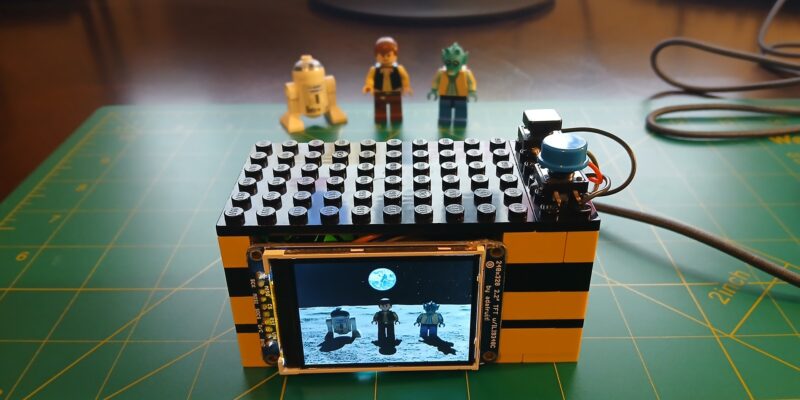Temperature monitor
By Rob Zwetsloot. Posted

Over the past 18 months, a lot of workplaces have introduced temperature checks for employees and customers, and healthcare fields are no different. While some use expensive hand scanners, Philip Koreski figured out a different solution: “I recently designed a touch-free temperature reading station for determining whether the employees in our office are fit for work or not, based on their temperature.”
Advertisement
Christmas is coming – keep Santa on the right track with our Raspberry Pi gift guide!
At Philip’s workplace, a laser eye surgery, employees would need to get their temperature taken and then fill out a paper form to confirm that they could work.
“I was given the assignment to digitise this process using a touchscreen device,” he tells us. “I thought that it would be nice to combine the process of taking our temperature with filling out the form. The other thing is that everyone who used it would have to touch the screen, so I figured if facial recognition was incorporated, it would be more hygienic. So what was developed is a Raspberry Pi-based device with an IR temperature sensor that can recognise the employee in front of it, take their temperature, and log whether it is too high or acceptable for work.”

Cool design
The touchscreen integrated into the monitor also allows for manual entry if required.
“Raspberry Pi is an obvious choice for a project like this,” Philip explains. “It is compatible with a wide range of sensors, has the processing power to be able to handle things like facial recognition, and it has the conveniences that come with a full-blown operating system. On top of that, it has great support for Python and most of the libraries needed straight out of the box. I do a lot of my software development in Python, so this is a major plus.”

Development happened over the course of three-to-four weeks as a side project, programming, part sourcing, and 3D design for the case.
“The largest part of that was actually hand gesture recognition believe it or not,” Philip says. “I wanted a good way to signal to the device that it got the identity of the user wrong. It took a lot of trial and error, but eventually I found a Haar cascade for palm recognition and that seemed like a good way to tell it to ‘stop’. But the nice thing is that something relatively complex, like facial recognition and temperature reading and logging, can be done by one developer in a reasonably short amount of time.”
Hot product
With projects like this, there’s always a concern that it won’t do its job. That was not the case for this monitor.

“The facial recognition works well to identify the registered users and the temperature reader is pretty accurate too,” Philip reveals. “In testing, we’ve found that distance from the sensor plays a large roll in accuracy, so we will be working on ways for the users to have an easier time placing themselves in the correct range of distance from the sensor. Overall, the response has been pretty good from the users.”
Currently, the monitor is still being tested, but, if it passes, Philip hopes to get it rolled out throughout other departments in the company, and hopefully further.

Rob is amazing. He’s also the Features Editor of Raspberry Pi Official Magazine, a hobbyist maker, cosplayer, comic book writer, and extremely modest.
Subscribe to Raspberry Pi Official Magazine
Save up to 37% off the cover price and get a FREE Raspberry Pi Pico 2 W with a subscription to Raspberry Pi Official Magazine.
Sign up to the newsletter
Get every issue delivered directly to your inbox and keep up to date with the latest news, offers, events, and more.


